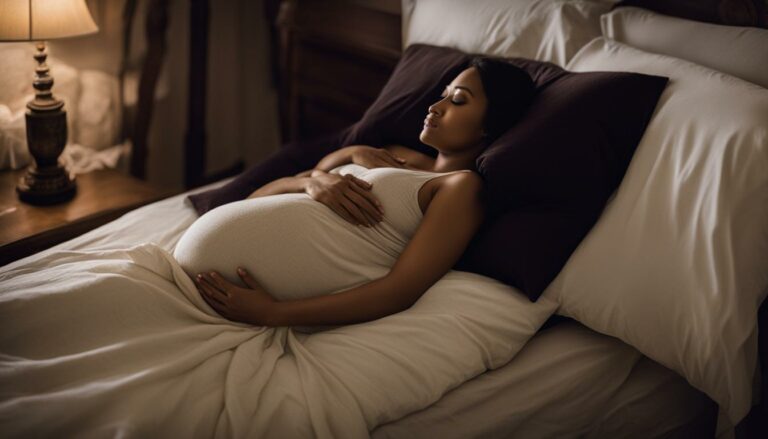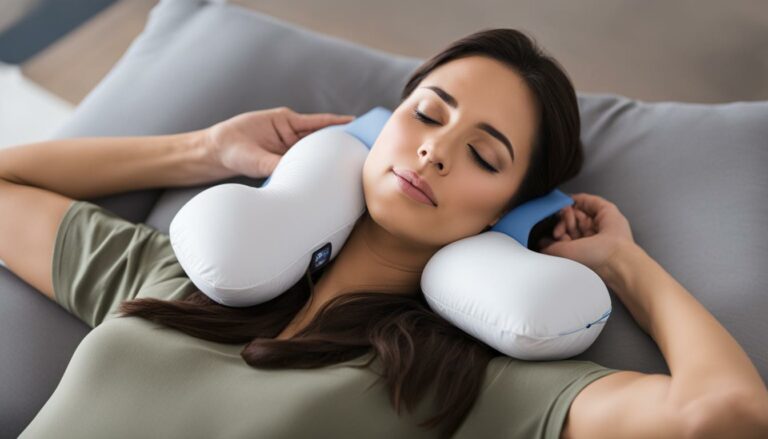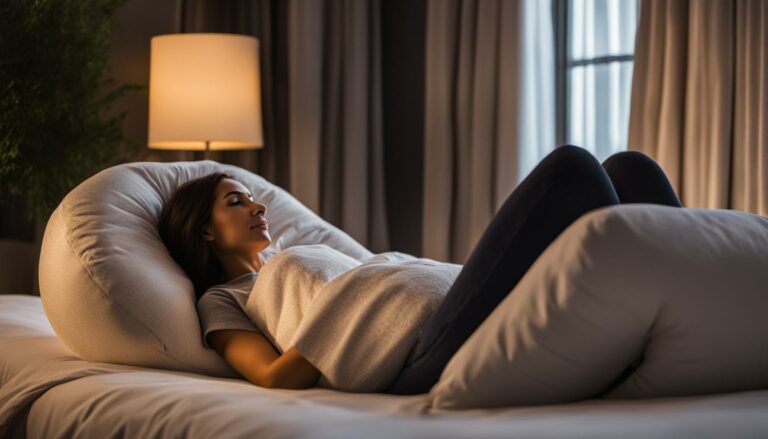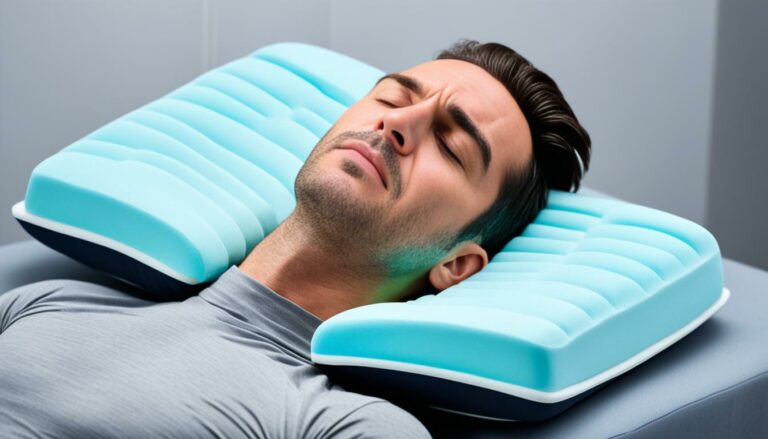Can Lice Live on Pillows? Get the Facts!
Eric Christie stands as a luminary in the bedding industry, with a career spanning nearly four decades since the early 1980s. His journey through the world of bedding has seen him wear many hats – a manufacturer, designer, and retailer, showcasing his versatility and expertise in Read more...
pillowsandbedsheets.com and its partners may earn a commission if you purchase a product through one of our links
If you or your loved ones have ever dealt with a lice infestation, you know how important it is to understand how these pesky critters spread. One common question that often arises is whether lice can live on pillows. In this article, we’ll dive into the facts and debunk some common misconceptions about lice infestation in pillows.
Before we explore whether lice can be found on pillows, it’s essential to understand the life cycle of lice. Lice go through three stages: eggs, nymphs, and adults. Eggs, also known as nits, are glued to the hair shafts near the scalp. It takes around 8 days for an egg to hatch into a nymph. Nymphs are baby lice that look like adult lice but are smaller in size. It takes about 7-10 days for a nymph to mature into an adult louse. Adult lice are tan to grey in color and have six legs with hook-like claws for holding onto hair. They can live on average 30 to 40 days.
Head lice need to feed on blood several times a day to survive. They lay eggs close to the scalp, and female lice can lay an average of 5 eggs per day. While head lice are most commonly found on the head and scalp, particularly the temples, nape of the neck, and behind the ears, they cannot live for long on pillows or sheets.
However, there is a small risk of transmission if a live louse crawls onto another person’s head who also uses the same pillows or sheets. But fret not, there are steps you can take to further reduce the risk. Vacuuming or tumble drying these items can help eliminate any potential lice that might have transferred. It’s essential to take precautions, especially if someone in your household is dealing with a lice infestation.
Now that we’ve gained some clarity on this topic, let’s dive into other key facts about head lice and nits. Understanding how head lice behave and spread can help you take necessary precautions to prevent infestation.
Key Takeaways:
- Head lice cannot live for long on pillows or sheets, but there is a small risk of transmission if a live louse crawls onto another person’s head who also uses the same pillows or sheets.
- Vacuuming or tumble drying pillows and sheets can help reduce the risk of lice transmission.
- Head lice cannot jump, fly, or swim. They primarily infest the head and scalp, particularly the temples, nape of the neck, and behind the ears.
- Sharing combs or brushes can spread head lice. Avoid sharing such items or soak them in hot water for 5-10 minutes to reduce the risk of transmission.
- Prevent the spread of head lice by minimizing head-to-head contact, avoiding sharing head-touching items, and using over-the-counter head lice repellents.
Head Lice Life Cycle: Eggs, Nymphs, and Adults
Understanding the life cycle of head lice is crucial when dealing with an infestation. Head lice go through three distinct stages in their life cycle: eggs, nymphs, and adults. Let’s take a closer look at each stage.
Eggs (Nits)
Head lice eggs, also known as nits, are small oval whitish-yellow eggs that are firmly attached to the hair shaft near the scalp. These minuscule eggs are about the size of a pinhead and often blend in with the color of the hair.
It takes approximately 8 days for the eggs to hatch into nymphs. During this period, it’s important to be vigilant and regularly check for newly hatched lice.
Nymphs
Nymphs are the baby lice that emerge from the eggs. They closely resemble adult lice but are smaller in size. Nymphs go through several molts as they grow and develop. The nymph stage typically lasts for about 7-10 days.
It’s worth noting that nymphs are capable of spreading and infesting new areas of the scalp. Therefore, prompt treatment is essential to prevent the infestation from worsening.
Adult Lice
Once the nymphs have matured, they become adult lice capable of breeding. Adult head lice are tan to grey in color and have six legs equipped with hook-like claws. These claws allow them to firmly grasp onto hair, making it difficult to remove them.
The size of an adult louse is roughly that of a sesame seed. Females tend to be slightly larger than males. Adult lice have a lifespan of around 30 to 40 days, during which they rely on regular blood meals from the scalp to survive.
| Stage | Description | Duration |
|---|---|---|
| Eggs (Nits) | Small oval eggs firmly attached to the hair shaft near the scalp. | 8 days |
| Nymphs | Newly hatched lice that resemble adult lice but are smaller. | 7-10 days |
| Adult Lice | Tan to grey-colored lice with six legs and hook-like claws for grasping onto hair. | 30-40 days |
Key Facts About Head Lice and Nits
To effectively combat head lice, it is essential to understand key facts about these pesky parasites. With knowledge on hand, you can take appropriate measures for prevention and treatment. Here are some important details you should know:
Feeding and Survival:
Head lice rely on feeding on blood several times each day to survive. Without a human host, they can only live for 24 to 48 hours. This short lifespan outside of the scalp emphasizes the importance of prompt treatment and prevention.
Egg Location:
Viable lice eggs, also known as nits, are typically laid within 6mm of the scalp. These tiny oval-shaped eggs are glued to the hair shafts, making them difficult to remove. It’s crucial to target this area when checking for and treating head lice.
Laying and Quantity:
Female lice are prolific egg layers. They can produce an average of 5 eggs per day, with a total range of 50 to 150 eggs throughout their lifespan. These eggs can hatch into nymphs in about 8 days, perpetuating the lice infestation if not addressed.
Lice Behavior:
While head lice may seem agile, they cannot jump, fly, or swim. Their primary mode of transmission is crawling from one person’s head to another’s during direct head-to-head contact. It is important to be mindful of this when engaging in activities that involve close proximity or shared items.
No Infectious Diseases:
Contrary to popular belief, head lice do not transmit infectious diseases. However, their presence can cause itching and discomfort for some individuals. It’s essential to address infestations promptly to prevent further discomfort and potential secondary infections from scratching.
“Understanding these key facts about head lice and nits can empower you to take informed action against these tiny intruders.”
When it comes to treatment, a variety of options are available, including over-the-counter and prescription lice treatments. It is important to follow the instructions carefully and consult with a healthcare professional if needed. Remember, the sooner you address a lice infestation, the easier it is to eliminate these unwelcome visitors.
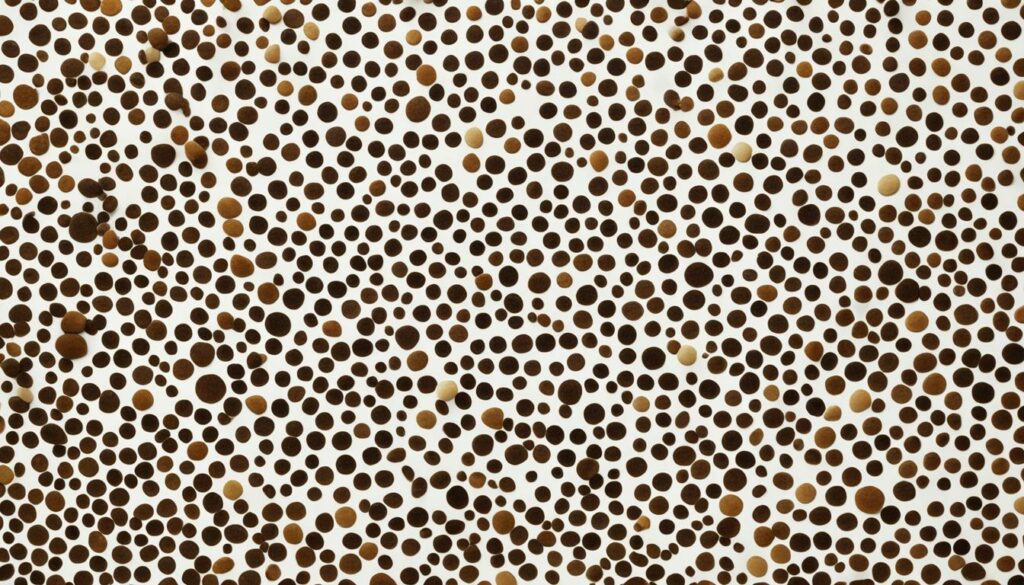
Where Are Head Lice More Commonly Found?
Head lice are pesky little creatures that commonly infest the head and scalp. While they can settle anywhere on the scalp, they have their favorite spots for laying their eggs. These favorite places include:
- The temples
- The nape of the neck
- Behind the ears
These areas provide the ideal environment for lice eggs, also known as nits, to attach to the hair shafts near the scalp. The warmth and proximity to the scalp provide the necessary conditions for the eggs to develop and hatch into nymphs, the baby lice stage. From there, the nymphs mature into adult lice capable of reproducing.
It’s important to note that if lice are found in areas other than the head and scalp, they are likely a different type of louse. Pubic lice, also known as crabs, primarily infest the pubic hair but can also be found in underarm and leg hair, as well as facial hair. Body lice, on the other hand, look similar to head lice but are slightly larger. They live in clothing and bedding and only come to the skin to feed on blood.
The Preferred Head Lice Locations
“Lice eggs, or nits, are commonly found in the temples, nape of the neck, and behind the ears, where the warmth and proximity to the scalp create a favorable environment for development.”
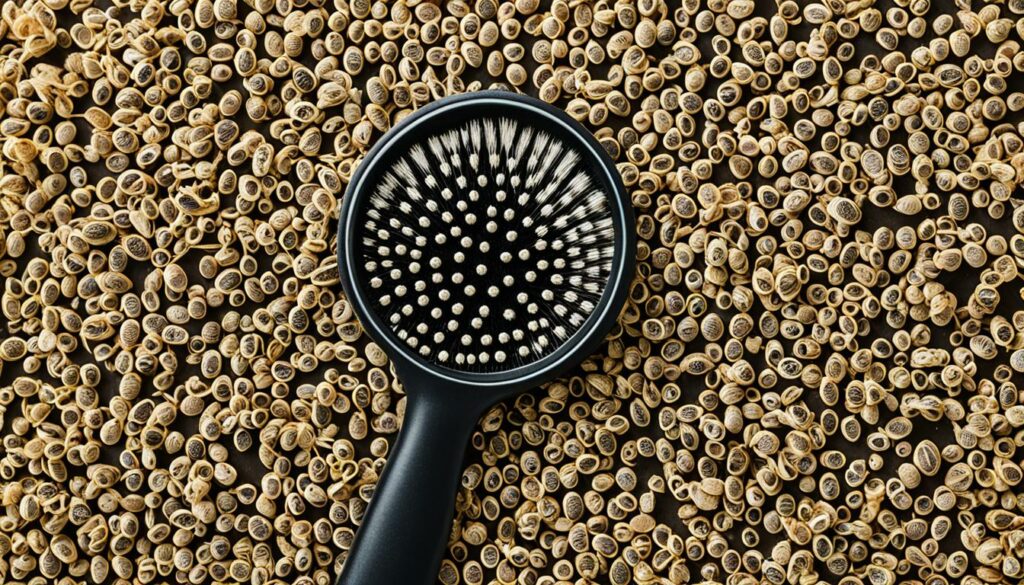
Can Head Lice Live on Pillows or Sheets?
Head lice cannot live for long on pillows or sheets. Although it is possible for a live louse to crawl onto another person’s head if they share the same pillows or sheets, the risk of transmission is very small. Head lice prefer to stay close to their host and do not like to crawl away. However, taking some precautions can further reduce the risk of lice transmission through pillows and sheets.
Vacuuming the pillows and sheets regularly can help eliminate any stray lice that may have fallen off a person’s head. Tumble drying these items on high heat for at least 30 minutes can also be effective in killing any lice or nits (lice eggs) that may be present.
Remember, head lice primarily survive by feeding on blood from the scalp and cannot survive for long without a human host. So even if a live louse ends up on a pillow or sheet, it is unlikely to live for an extended period.
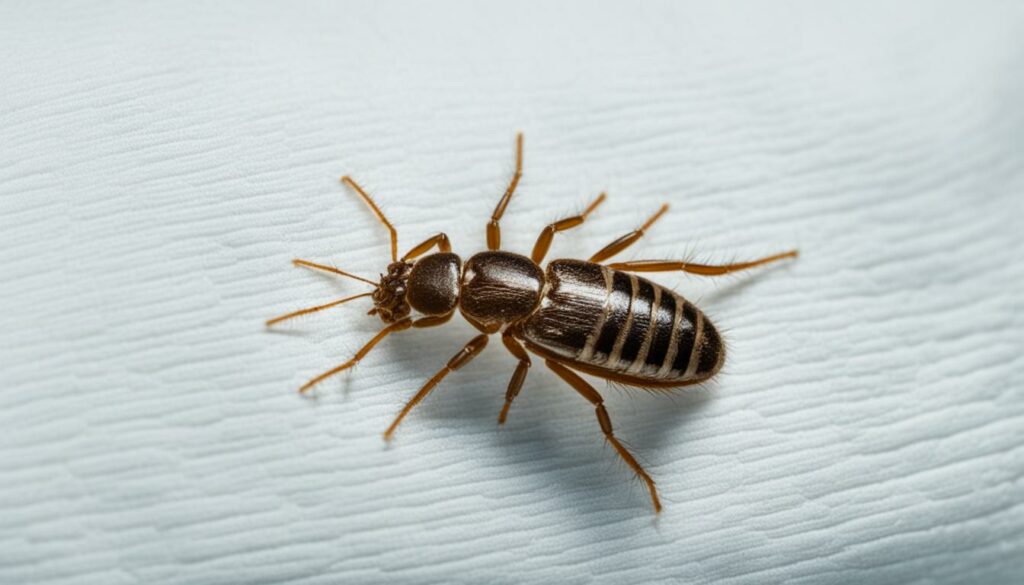
Precautions to Reduce the Risk of Lice Transmission:
- Vacuum pillows and sheets regularly to remove any stray lice.
- Tumble dry pillows and sheets on high heat for at least 30 minutes to kill lice and nits.
- Consider using separate pillows or changing pillowcases if someone in the household has an active lice infestation.
- Do not share pillows or bedding with someone who has an active lice infestation.
By following these precautions, you can help minimize the risk of lice transmission through pillows and sheets.
Can Head Lice Live on Toys?
When dealing with a head lice infestation, many parents may wonder if they need to wash or treat their child’s toys. The good news is that there is no need to take such measures. Head lice cannot survive on toys without feeding on a human host.
Head lice rely on blood from the scalp to survive, and without regular feeding, they can only survive for a limited period, typically 24 to 48 hours. This means that if a louse happens to come off a person’s head and crawl onto a toy, it will not be able to live there for an extended period.
In the past, it was recommended to bag items such as stuffed animals for weeks to control lice infestations. However, current research and expert guidance have indicated that this is unnecessary. Since lice cannot survive without feeding, simply removing them from the head and ensuring that they cannot come into contact with a human host for an extended period is sufficient.
So, rest assured that you do not need to worry about washing or treating your child’s toys in the event of a head lice infestation. Instead, focus on treating the affected individual’s head and take steps to prevent the spread of lice to other human hosts.
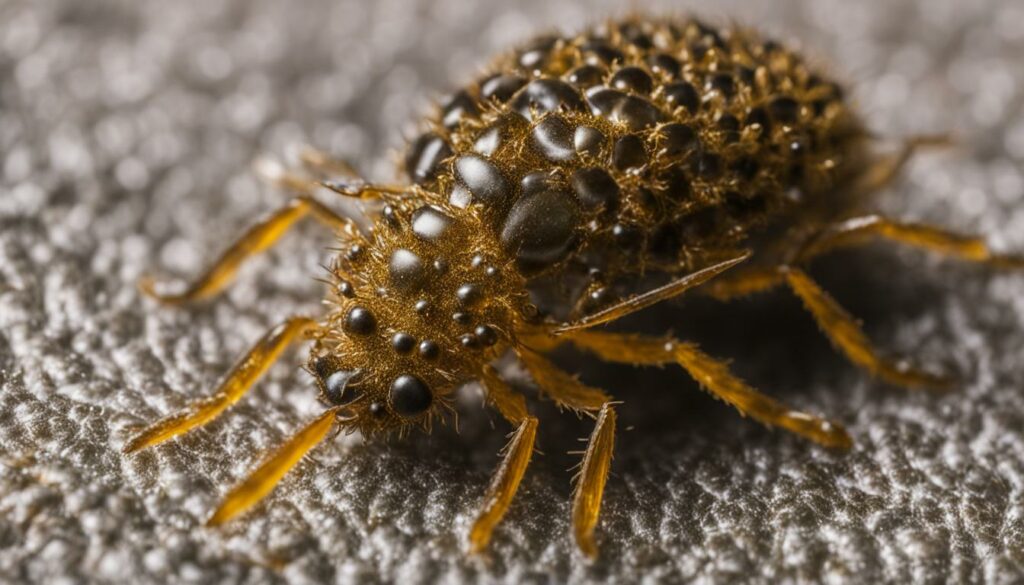
Tips for Preventing the Spread of Head Lice through Toys
While lice cannot survive on toys, it is still essential to take precautions to prevent the spread of lice to other individuals who may come into contact with the same toys. Here are some practical tips:
- Encourage individual use of toys, especially during an active lice infestation.
- Advise children not to share their toys with others, especially if they have lice.
- Regularly clean and sanitize toys, focusing on surfaces that come into contact with the head or hair.
- If possible, rotate toys or set aside the ones used by an infested individual for a few days.
By following these simple steps, you can minimize the risk of lice transmission through toys and help control and prevent the spread of head lice within your household or community.
Can Head Lice Be Caught in a Bathtub or Swimming Pool?
Head lice cannot swim. When lice are in water, they go into a state of suspended animation and remain attached to the hair, holding on for dear life. This is how they survive shampooing, rain, seawater, and swimming pools. The risk of catching head lice is higher when sharing a towel with an infested person rather than through bathing or swimming in water.
If you’re concerned about lice transmission in water, it’s important to understand that lice are not strong swimmers and cannot survive for long when submerged in water. They rely on holding onto the hair shafts and are not capable of actively moving through the water or swimming from one host to another. Therefore, the chance of contracting head lice while swimming or taking a bath is minimal.
However, it’s worth noting that sharing towels or personal items like hairbrushes or combs with someone who has an active lice infestation increases the risk of transmission. It’s essential to avoid sharing these items to reduce the likelihood of lice spreading from one person to another.
“Head lice cannot swim and have a limited ability to survive submerged in water. The risk of catching head lice from a bathtub or swimming pool is very low, but sharing towels or personal items can increase the chances of transmission.”
If you or someone you know has head lice, it’s essential to follow proper treatment protocols and take steps to prevent the infestation from spreading to others. Regularly washing and drying personal items, such as towels and bedding, can help minimize the risk of lice transmission.
While it’s essential to be aware of lice transmission in water, it’s equally important not to panic or let fear dictate your actions. Understanding the facts and taking simple preventative measures can help you and your loved ones stay lice-free.
Can Head Lice Be Caught from Pets?
Head lice are specific to humans and cannot be caught from pets. Pets cannot catch head lice from humans either. Head lice only infest human heads.
Do I Need to Fumigate the House?
When dealing with a head lice infestation, there is no need to resort to house fumigation. Head lice require a human host to survive and cannot live for an extended period without one. Instead, you can focus on taking simple steps to minimize the risk of lice in your home.
One effective method is to vacuum areas where an infested person has sat or laid. This helps remove any lice or eggs that may have fallen off the person’s head. Pay close attention to upholstered furniture, rugs, and bedding. Additionally, regular laundering of bedding and clothing at normal temperatures will suffice in most cases.
Remember, head lice do not survive long without a human host. So, while it’s important to maintain cleanliness and take preventive measures, extreme measures like fumigating the entire house are unnecessary.
By vacuuming and practicing personal hygiene, you can effectively manage and prevent the spread of head lice without the need for drastic measures.
| Lice Treatment for the House | House Fumigation for Head Lice | |
|---|---|---|
| Effectiveness | Effective in removing lice and eggs from surfaces | Unnecessary and excessive for managing head lice |
| Convenience | Simple and easy to implement | Requires professional assistance and extensive preparation |
| Cost | Minimal cost with regular cleaning supplies | Expensive due to professional services and chemicals |
| Safety | Safe for household members and pets | Potential health risks from chemical exposure |
Can Head Lice Be Caught from Helmets or Headphones?
Head lice have hook-like claws that are perfect for holding onto hair, not other fabrics. Hence, the risk of lice transmission from helmets, hats, or headphones is very small. However, it is recommended to ensure that children do not share these items to eliminate any risk of transmission.
Head lice primarily rely on the scalp and hair to survive and reproduce. They cannot effectively attach themselves to smooth surfaces like helmets or headphones. These items do not provide the necessary conditions for lice to thrive, making transmission unlikely.
While sharing helmets or headphones may not pose a significant risk of lice transmission, it is still important to maintain personal hygiene and avoid sharing personal items that come into close contact with the head. Preventing the spread of head lice requires individuals to take precautionary measures and practice good hygiene habits.
Remember, it is always better to be safe than sorry. Encourage children to use their own helmets and headphones to reduce the risk of lice transmission.
Table: Tips to Reduce the Risk of Lice Transmission from Helmets or Headphones
| Preventive Measures | Description |
|---|---|
| Avoid sharing helmets or headphones | Discourage children from sharing these items to minimize the risk of lice transmission. |
| Regularly clean and disinfect helmets and headphones | Wipe down these items with disinfectant wipes or a cloth dampened with isopropyl alcohol to maintain cleanliness. |
| Encourage personal hygiene | Teach children to regularly wash their hair and keep it clean to prevent the spread of lice. |
Can Head Lice Be Caught from Combs or Brushes?
Head lice can be transmitted through the sharing of combs or hairbrushes. While lice struggle to cling to the hard plastic or wood of the brush or comb, they can still hold onto hair that is left in these items. To reduce the risk of lice transmission, it is recommended to avoid sharing brushes or combs altogether. However, if sharing cannot be avoided, it is advised to soak the items in hot water for 5 to 10 minutes after each use. This helps to kill any potential lice or nits that may be present.
By taking this precautionary measure, you can significantly reduce the risk of transmitting head lice through combs or brushes, keeping yourself and others safe from infestation.
Tips for Reducing the Spread of Head Lice
To prevent the spread of head lice, follow these simple yet effective tips:
1. Minimize or avoid head-to-head contact with others. Lice can crawl from one person’s hair to another’s, so keeping a safe distance can help prevent transmission.
2. Avoid sharing items that come into contact with the head, such as combs, brushes, hats, scarves, helmets, and headphones. Lice can easily transfer from one person to another through these items.
3. Separate personal belongings, especially items that are used near the head, such as pillows, towels, and hair accessories. This can help reduce the risk of lice spreading from one person to another.
4. Take extra care with fabrics that are in close contact with an infested person’s head, such as hats, scarves, and pillowcases. Tumble drying or vacuuming these items can help eliminate any lice that may be present.
5. Consider using over-the-counter head lice repellents, which can act as a preventive measure. These products often contain natural ingredients that are safe for regular use.
By following these lice prevention tips and taking necessary precautions, you can minimize the spread of head lice and keep yourself and those around you lice-free.
FAQ
Can lice live on pillows?
Lice do not live for long on pillows or sheets, but there is a small risk of transmission if a live louse crawls onto another person’s head who also uses the same pillows or sheets. However, vacuuming or tumble drying these items can help reduce the risk further.
What is the life cycle of head lice?
The life cycle of head lice consists of three stages: eggs, nymphs, and adults. Eggs, also known as nits, are small oval whitish-yellow eggs that are glued to the hair shaft near the scalp. They take around 8 days to hatch into nymphs. Nymphs are newly hatched baby lice. They look like adult lice but are smaller, about the size of a pinhead. It takes about 7-10 days for a nymph to mature into an adult louse capable of breeding. Adult head lice are tan to grey in color and have six legs with hook-like claws for holding onto hair. They are about the size of a sesame seed. A female louse is slightly larger than the male. Adult lice live on average 30 to 40 days.
What are some key facts about head lice and nits?
Head lice cannot jump, fly, or swim. They do not transmit infectious diseases, and not everyone gets itchy when they have head lice. Head lice are most commonly found on the head and scalp, particularly the temples, nape of the neck, and behind the ears. They do not survive long on pillows or sheets, but there is a small risk of transmission if a live louse crawls onto another person’s head who also uses the same pillows or sheets.
Where are head lice more commonly found?
Head lice are most commonly found on the head and scalp. They can be found anywhere on the scalp but have favorite places where they like to lay their eggs, such as the temples, nape of the neck, and behind the ears. If lice are found elsewhere on the body, it is likely a different type of louse, such as pubic lice or body lice.
Can head lice live on pillows or sheets?
Head lice cannot live for long on pillows or sheets. However, it is possible for a live louse that has come off a person’s head to crawl onto another human host who also puts their head on the same pillows or sheets. The risk of catching head lice this way is very small as head lice do not like to crawl away from their host. Vacuuming or tumble drying pillows and sheets can further reduce the risk of transmission.
Can head lice live on toys?
There is no need to wash or treat a child’s toys if they have head lice. Head lice cannot survive without feeding on a human host for more than 24-48 hours. Historically, it was recommended to bag items such as stuffed animals for weeks to control infestations, but that is no longer necessary.
Can head lice be caught in a bathtub or swimming pool?
Head lice cannot swim. When lice are in water, they go into a state of suspended animation and remain attached to the hair, holding on for dear life. This is how they survive shampooing, rain, seawater, and swimming pools. The risk of catching head lice is higher when sharing a towel with an infested person rather than through bathing or swimming in water.
Can head lice be caught from pets?
Head lice are specific to humans and cannot be caught from pets. Pets cannot catch head lice from humans either. Head lice only infest human heads.
Do I need to fumigate the house?
There is no need to fumigate the house to eliminate head lice. Vacuuming areas where an infested person has sat or laid can help reduce the risk of lice. Lice do not survive long without a human host, so there is no need to throw everything in the washing machine.
Can head lice be caught from helmets or headphones?
Head lice have hook-like claws that are perfect for holding onto hair, not other fabrics. The risk of transmission from helmets, hats, or headphones is very small. However, it is recommended to ensure that children do not share these items to eliminate any risk of transmission.
Can head lice be caught from combs or brushes?
It is possible to spread head lice through the sharing of combs or hairbrushes. While head lice struggle to cling to the hard plastic or wood of the brush or comb, there is usually hair left in these items that lice can hold onto. To reduce the risk of transmission, it is recommended to avoid sharing brushes or combs or to place them in hot water after use for 5 to 10 minutes.
Do you have any tips for reducing the spread of head lice?
There are several tips to reduce the spread of head lice. Minimizing or avoiding head-to-head contact, avoiding sharing head-touching items, separating personal belongings, tumble drying or vacuuming fabrics in close contact with an infested person’s head, and using over-the-counter head lice repellents can help prevent the spread of head lice.
Eric Christie stands as a luminary in the bedding industry, with a career spanning nearly four decades since the early 1980s. His journey through the world of bedding has seen him wear many hats – a manufacturer, designer, and retailer, showcasing his versatility and expertise in Read more...



